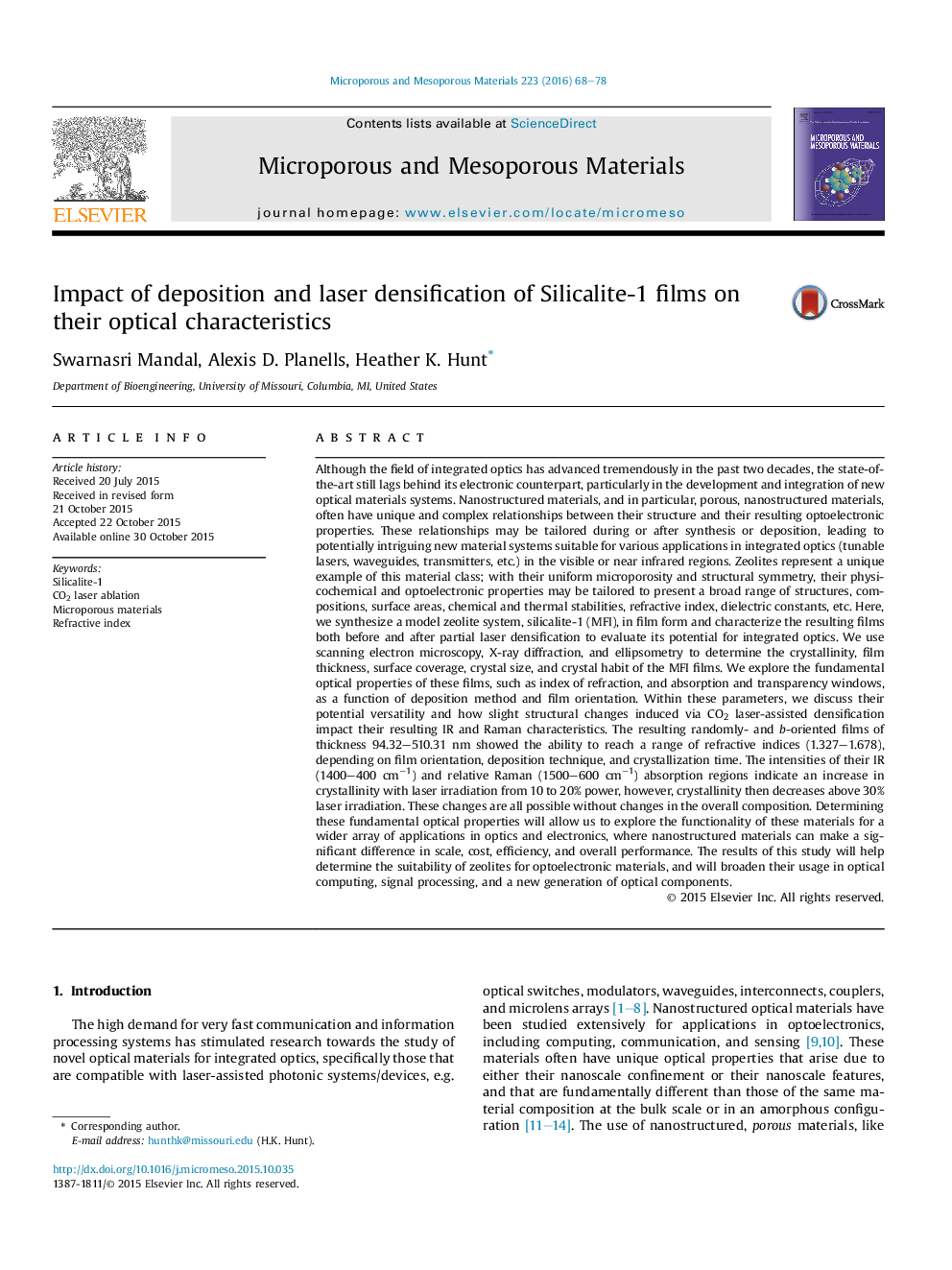| کد مقاله | کد نشریه | سال انتشار | مقاله انگلیسی | نسخه تمام متن |
|---|---|---|---|---|
| 72278 | 49016 | 2016 | 11 صفحه PDF | دانلود رایگان |
• In situ and ex situ silicalite-1 films of various thicknesses were synthesized.
• Ellipsometry was used to measure thickness and refractive index of the films.
• Films made via in situ synthesis were densified via CO2 laser irradiation.
• Increasing laser power during densification resulted in increasing film crystallinity.
• Beyond 30% laser power there was reduction in relative crystallinity of the films.
Although the field of integrated optics has advanced tremendously in the past two decades, the state-of-the-art still lags behind its electronic counterpart, particularly in the development and integration of new optical materials systems. Nanostructured materials, and in particular, porous, nanostructured materials, often have unique and complex relationships between their structure and their resulting optoelectronic properties. These relationships may be tailored during or after synthesis or deposition, leading to potentially intriguing new material systems suitable for various applications in integrated optics (tunable lasers, waveguides, transmitters, etc.) in the visible or near infrared regions. Zeolites represent a unique example of this material class; with their uniform microporosity and structural symmetry, their physicochemical and optoelectronic properties may be tailored to present a broad range of structures, compositions, surface areas, chemical and thermal stabilities, refractive index, dielectric constants, etc. Here, we synthesize a model zeolite system, silicalite-1 (MFI), in film form and characterize the resulting films both before and after partial laser densification to evaluate its potential for integrated optics. We use scanning electron microscopy, X-ray diffraction, and ellipsometry to determine the crystallinity, film thickness, surface coverage, crystal size, and crystal habit of the MFI films. We explore the fundamental optical properties of these films, such as index of refraction, and absorption and transparency windows, as a function of deposition method and film orientation. Within these parameters, we discuss their potential versatility and how slight structural changes induced via CO2 laser-assisted densification impact their resulting IR and Raman characteristics. The resulting randomly- and b-oriented films of thickness 94.32–510.31 nm showed the ability to reach a range of refractive indices (1.327–1.678), depending on film orientation, deposition technique, and crystallization time. The intensities of their IR (1400–400 cm−1) and relative Raman (1500–600 cm−1) absorption regions indicate an increase in crystallinity with laser irradiation from 10 to 20% power, however, crystallinity then decreases above 30% laser irradiation. These changes are all possible without changes in the overall composition. Determining these fundamental optical properties will allow us to explore the functionality of these materials for a wider array of applications in optics and electronics, where nanostructured materials can make a significant difference in scale, cost, efficiency, and overall performance. The results of this study will help determine the suitability of zeolites for optoelectronic materials, and will broaden their usage in optical computing, signal processing, and a new generation of optical components.
Figure optionsDownload as PowerPoint slide
Journal: Microporous and Mesoporous Materials - Volume 223, 15 March 2016, Pages 68–78
